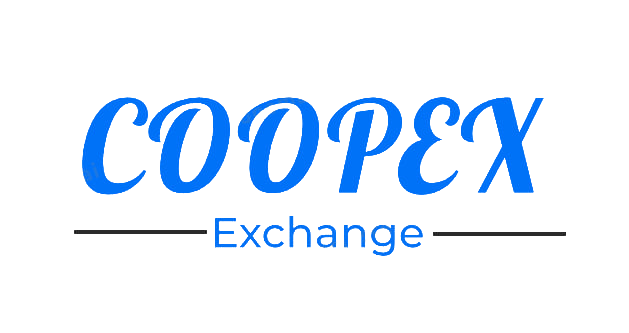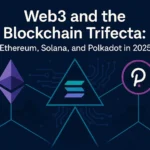Since its inception, Polkadot has positioned itself as a foundational infrastructure layer for a decentralized, interoperable internet. By 2025, it has matured into one of the most technically advanced and widely adopted multichain ecosystems, enabling developers to build specialized blockchains—parachains—that seamlessly communicate while retaining their sovereignty.
In this article, we explore the full arc of Polkadot’s journey, from its foundational principles to its real-world applications in 2025, governance evolution, and future outlook.
A Brief History of Polkadot
Polkadot was created by Dr. Gavin Wood, co-founder of Ethereum and author of the Solidity programming language. Frustrated by Ethereum’s scalability and governance limitations, Wood published the Polkadot whitepaper in 2016, proposing a sharded multichain network designed for interoperability and shared security.
Key Milestones:
- 2017: Web3 Foundation founded to support development.
- 2019: Polkadot’s testnet “Kusama” launched as a canary network.
- 2020: Polkadot mainnet goes live.
- 2021–2022: First parachain slot auctions held; Acala, Moonbeam, and others onboarded.
- 2023–2024: XCM (Cross-Consensus Messaging) becomes industry standard.
- 2025: Over 300 parachains running live across Polkadot and Kusama networks.
Core Architecture of Polkadot
Polkadot is fundamentally different from traditional Layer 1 blockchains due to its Relay Chain + Parachains model.
Relay Chain
- The central chain that provides security, consensus, and interoperability.
- Uses Nominated Proof-of-Stake (NPoS) for scalability and decentralization.
- Doesn’t support smart contracts directly; designed to coordinate parachains.
Parachains
- Independent blockchains with their own tokens and governance.
- Plug into the Relay Chain for shared security and communication.
- Can be optimized for DeFi, privacy, gaming, or data services.
Cross-Consensus Messaging (XCM)
- Protocol for communication between parachains.
- Enables token transfers, smart contract calls, and governance coordination.
Shared Security
- Validators secure the entire Polkadot network.
- Parachains benefit from robust economic security without setting up their own validator sets.
Interoperability: Polkadot’s Unique Value Proposition
Interoperability is the beating heart of Polkadot’s ecosystem. Unlike isolated chains or traditional L1s, parachains can send messages, trigger events, and exchange assets natively across the network.
Examples of Cross-Chain Use Cases:
- Cross-chain DeFi: A DEX on one parachain settles trades with a stablecoin minted on another.
- NFT markets: Cross-parachain NFTs interact with different metadata standards and royalties.
- Governance coordination: A proposal passed on one chain triggers policy updates across multiple parachains.
This seamless cross-chain environment is enabling more complex, composable applications than are possible on monolithic chains like Ethereum.
Key Ecosystem Players and Use Cases
By mid-2025, Polkadot supports hundreds of parachains and thousands of dApps. Let’s explore notable examples:
DeFi:
- Acala: Decentralized stablecoin and liquidity hub for Polkadot.
- Parallel Finance: Cross-chain lending and staking services.
- HydraDX: An omnipool DEX that supports multi-asset swaps.
NFTs & Gaming:
- Unique Network: Custom NFT standards for art, identity, and gaming.
- Astar: WASM-based smart contracts supporting metaverse dApps.
- Efinity: Parachain for NFTs by Enjin, enabling gasless transactions and item portability.
Infrastructure:
- Phala Network: Confidential computing with TEE-based off-chain processing.
- Crust Network: Decentralized storage solution akin to Filecoin.
- Subsocial: Decentralized social media protocol.
Ecosystem Metrics (Q2 2025)
| Metric | Value (May 2025) | YoY Growth |
| Active Parachains | 312 | +61% |
| Total DOT Staked | 586 million DOT | +47% |
| Relay Chain Validators | 1,200 | +22% |
| Monthly XCM Transfers | 14.3 million | +78% |
| TVL Across Parachains | $12.4 billion | +56% |
Governance Evolution: OpenGov in Action
Polkadot’s governance is completely decentralized via OpenGov, introduced in 2023. This system replaces council-based decision-making with full community referenda.
Features of OpenGov:
- Track-based voting: Different proposal types have unique approval tracks.
- Conviction voting: The longer DOT is locked, the more weight the vote carries.
- Fellowship model: Developers and contributors are rewarded for proposals and audits.
OpenGov has processed over 1,200 referenda in 2024 alone, covering upgrades, treasury grants, and system parameters.
Developer Ecosystem & Tooling
Polkadot is written in Rust using the Substrate framework, which allows rapid blockchain development with pre-built modules.
Developer Tools:
- Substrate SDK: Modular components for building parachains.
- Polkadot-JS: Web interface for managing accounts, staking, and governance.
- Ink!: Smart contract language optimized for WASM.
Developer Growth:
- Over 25,000 monthly active developers across Polkadot and Kusama.
- Hackathons run monthly in Asia, Africa, and South America.
- Low-code tools like Sub0 and MoonBuilder attract non-dev founders.
Polkadot vs. Other Multichain Networks
| Feature | Polkadot | Cosmos | Avalanche |
| Security Model | Shared via Relay Chain | Sovereign chains | Shared (Subnet opt-in) |
| Interoperability | Native via XCM | IBC | Bridging |
| Governance | Fully on-chain | Mostly off-chain | Validator-controlled |
| Smart Contracts | Optional via parachains | Native on Cosmos SDK | Native on Avalanche |
| Custom Chains | Substrate-based | Cosmos SDK | Avalanche Subnets |
Polkadot’s unique blend of shared security, native interoperability, and governance modularity gives it a strong competitive advantage in multichain infrastructure.
Predictions for Polkadot in Late 2025
- Liquid Staking Parachains: DOT staking becomes DeFi-native.
- AI x On-chain Compute: TEE + off-chain ML models on Phala.
- XCM 3.0: Enables atomic cross-chain swaps and permissioned contracts.
- Real-world Assets (RWAs): Tokenized stocks and commodities enter the ecosystem.
- Multi-Relay Chains: Kusama and Polkadot interconnect under unified governance.
FAQ: Polkadot Multichain Ecosystem
What is a parachain?
A parachain is an independent blockchain that connects to Polkadot’s Relay Chain for security and cross-chain communication.
Is Polkadot a Layer 1 or Layer 0?
Polkadot is considered a Layer 0 meta-protocol—it powers many Layer 1 parachains.
How is DOT used?
DOT is used for staking, governance, bonding for parachains, and paying transaction fees on the Relay Chain.
What makes Polkadot different from Ethereum?
Polkadot allows each parachain to have its own runtime and consensus, whereas Ethereum hosts all dApps on a single virtual machine.
Can parachains talk to Ethereum?
Yes. Via bridges like Snowbridge and Moonbeam’s Ethereum-compatible environment.

Herbert Vega is a blockchain and cryptocurrency expert with a passion for decentralized technology. He is the founder and CEO of XYZ Decentralized Exchange, a cutting-edge platform that allows users to trade cryptocurrencies in a secure and decentralized manner.




